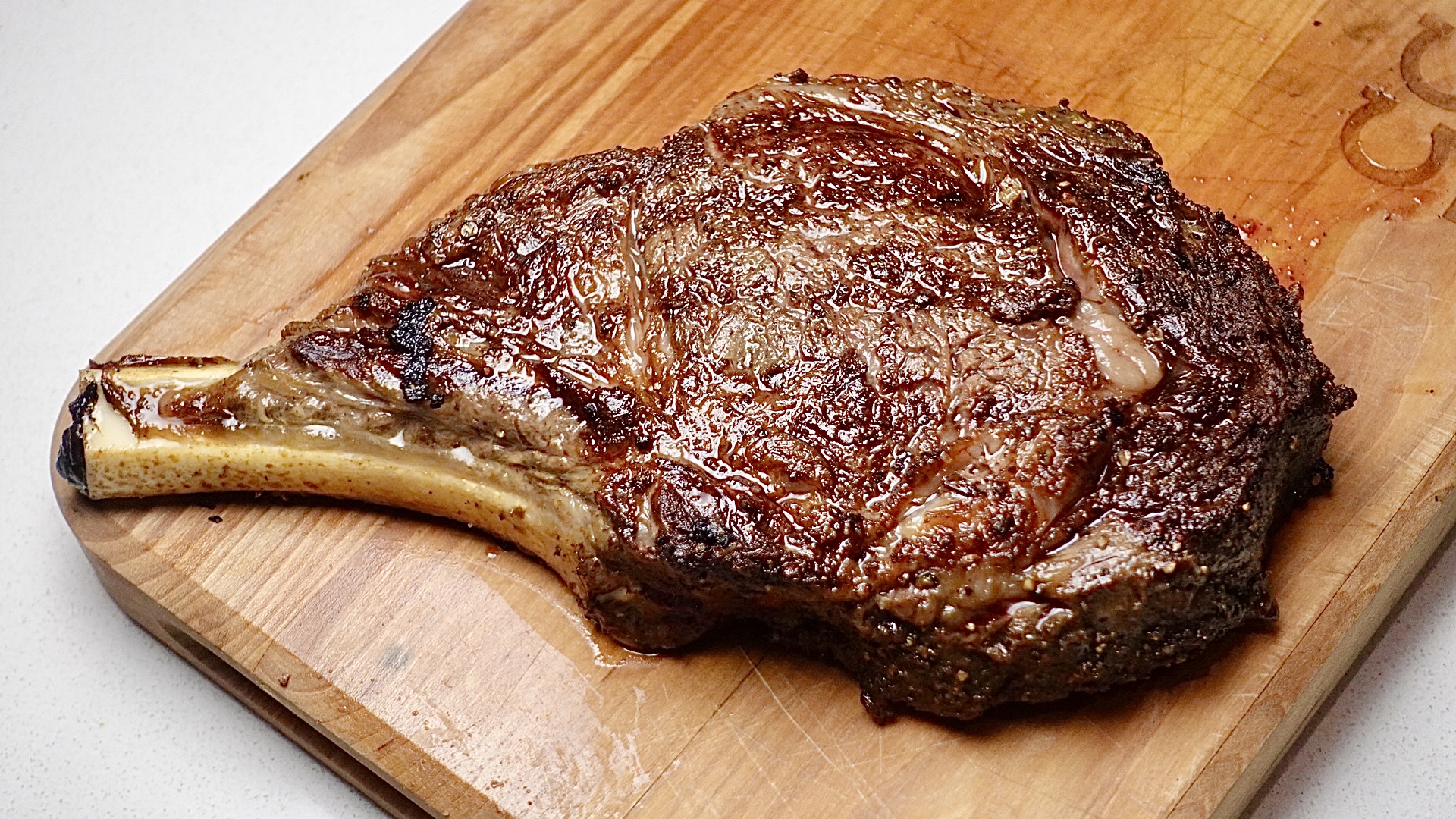
There is no one perfect way to cook a steak, but many argue that the perfect way is to cook it medium rare. That's a steak with a nice, rosy pink inside and a nice brown crust on the outside. A medium rare steak is cooked to an internal temperature of 135-140 degrees Fahrenheit on the inside.
Internal doneness and crust doneness are two different matters!
When it comes to flavor, the crust is where much of the action is. The Maillard reaction is a chemical reaction that occurs when proteins and sugars are heated together to caramelize, in the process creating hundreds of flavor compounds that tease and delight the tastebuds. The Maillard reaction only occurs at high temperature.
Tenderness and juiciness is more of a function of the inside of the steak. A steak that is cooked too much will become tough and chewy.
The key to a flavorful and tender steak is therefore to sear it on high heat so as to limit the total cook time (and thus to avoid over cooking the insides) while searing the heck out of the outside.
Meat quality has a big impact on flavor, obviously. The way the animal was raised, its breed, what it ate and many other factors determine as much or even more about taste than even cooking does. At Crowd Cow, we pride ourselves on offering the highest quality, most delicious steaks in the world by working with producers who do not cut any corners in their pursuit of quality.
Why do some people prefer well done steaks? In my opinion, many of these folks may actually be hiding behind concerns around eating undercooked meat. It's true that 145°F is the temperature that kills germs, and it's also true that if you cook your steak to 145°F, you'll have a medium-well steak. So it is possible to have a medium rare steak safely? Yes! Germs are born of the air and from contact with unsanitary surfaces, and are therefore only a concern for the exterior of meat. It's why professional chefs make steak tartare by first slicing off and discarding the outside of the steak with a clean knife. And it's why they're perfectly happy to serve you a steak "so rare it's practically grazing on the salad." Professionals often sear at 750°F or even 1200°F to get the perfect crust, and to lock in the tender and juice, rare, interior. Black and blue, anyone?
But is there a problem with a well done steak? Well, yes. B vitamins, including thiamin, niacin, and B6, are all essential for optimal health, and they can be found in abundance in steak juices. And by overcooking a steak, these essential nutriants cook away, along with the flavor, to leave a flat, tough hunk of meat. Such a waste! Some chefs reserve lower quality cuts for people who order well done steaks for this reason.
On a final note, when you're cooking a steak, one of the most important things to remember is to let it rest. Resting allows the juices, which are pushed towards the centre of the cut under heat, to be redistributed and reabsorbed throughout the meat. This means that when you cut into your New York Steak, Ribeye, Denver or Coulette, you'll get more of that nutritious, juicy goodness with every bite.
Enjoy!
